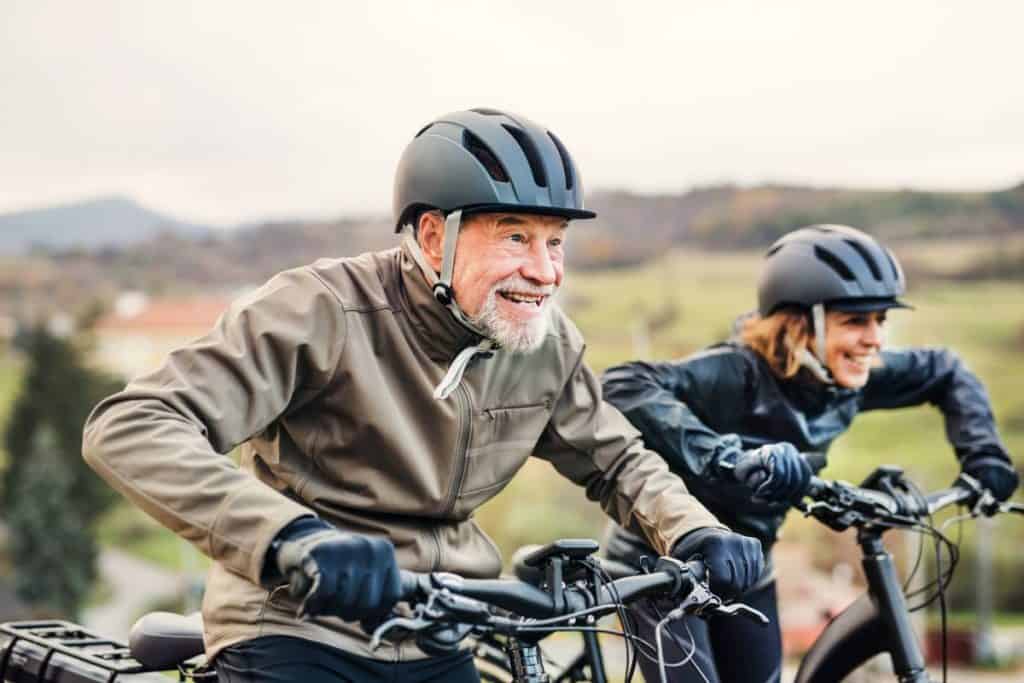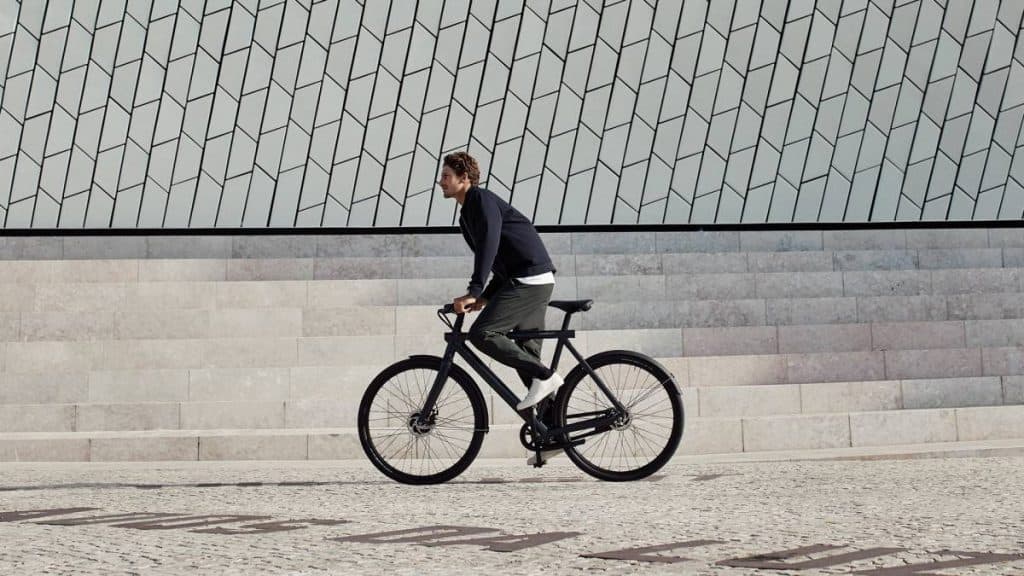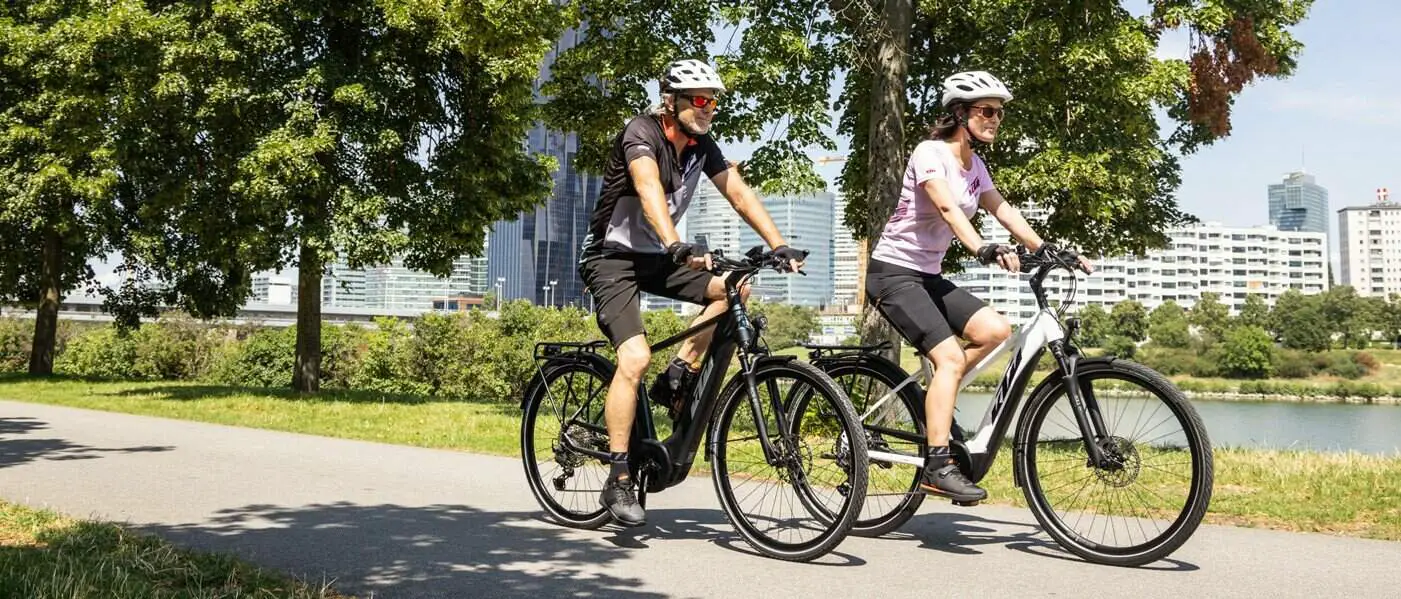Last Updated on June 2, 2022 by Igor Karni

Though there has been more than enough evidence to show the many physical and mental benefits of e-Biking, there is still a heavy presence of rhetoric saying that those who ride e-Bikes are, to some level, “cheating”.
Read also: Top 10 mental benefits of riding an electric bike. And, Can riding an e-bike improve mental health.
Those who think this way primarily place the blame on the electric assistance, assuming that the battery and motor in place take most of the work off the rider and therefore is not a legitimate form of exercise.
However, there are many factors that have proved otherwise, and even quite the opposite of this claim. The electric assistance feature allows more accessibility to riders of all ages and those affected by health issues, offers an efficient commuting option, and has even been proven to be just as effective a form of exercise as traditional cycling.
This article will go into further detail as to why e-Biking is not cheating, as well as its many benefits.
E-bikes cater to people with physical conditions
Traditional bicycling is not for everyone, particularly those dealing with serious physical conditions.
For example, someone with arthritis, sciatica, or other joint-related conditions cannot rely on a traditional bicycle because of the stress it may put on their joints. Despite cycling being a low-impact sport overall, it can get exhausting and can be difficult (and sometimes even impossible) for someone dealing with these types of conditions to rely solely on their own pedal power.
Read also: Can I ride an electric bicycle with knee problems or arthritis? And, Can I ride an electric bicycle with sciatica?
A person who has had heart attacks, heart disease, or stroke cannot ride a traditional bicycle because it risks putting too much stress on their heart. Similarly, people dealing with injuries who are told to stay active in order to recover often cannot turn to traditional bikes as the intensity risks further exacerbate the injury.
For the elderly dealing with additional conditions or are simply suffering from the effects of old age, riding a traditional bicycle can be dangerous and risk injury.
Thus, e-biking – which allows riders to adjust the level of electric assistance that suits their needs – provides those who simply cannot risk using a traditional bicycle with the option of cycling. In fact, many e-Bike riders of all ages and dealing with all types of physical conditions have noted just how much e-Biking has changed (and sometimes even saved) their lives.
Read also: Can I use e-bike to get fit or for weight loss? And, Are e-bikes good for cardio exercise?
It’s not “cheating”, because being able to ride an e-Bike for these people helps to improve fitness levels, blood pressure, metabolism, and more. Moreover, e-biking provides an option for those who may be struggling to find a suitable solution to improve or manage their conditions. Often this results in becoming sedentary, so e-Biking provides a safer, more balanced option that can easily be incorporated into a fitness routine.

Mobility and accessibility with an electric bike
In the same vein as being a good option for those who are otherwise challenged, the mobility and accessibility of an e-Bike extend even to people who are physically fit and face no major health issues.
Think of it this way: if you drive a car to get to work or for general travel, you are being sedentary. Introducing an e-Bike into your life means that you can easily commute and get some fitness in, even if you swap it out with your car only once or twice a week.
Read also: How to select the best commuter e-bike (with examples)? – also in this article. And, how much does a commuter e-bike cost?
Not only that, but sometimes people cannot afford a car, which is an especially present issue in big cities. Rather than relying on walking, which can become exhausting or just not doable for long distances, or on public transit, e-Bikes offer a fast and efficient option that will also benefit your fitness.
Additionally, many elderly people who are dealing with vision impairment often have to give up driving, and then the issue becomes not having the mobility to lead an active lifestyle. This tends to lead to feelings of depression, isolation, and leading a sedentary life, which in turn can lead to other health complications and risk shortening the life span.
However, there is an endless number of positive stories about elderly people whose lives have changed for the better once discovered e-bikes. Not only does e-Biking re-introduce activity and physical fitness back into their lives and in turn improves chances of longer life, but mobility, sense of independence, and freedom lead to improved mental health.
In terms of the physical benefits, a 2017 study done in Norway (source) showed that e-Bike riders were physically active for 95% of their riding time, which was the same amount shown in traditional cycling. This observation further proves that riding an e-Bike, though lower intensity than traditional cycling, does not mean you have to sacrifice fitness.

Read also: Can I use e-bike to get fit or for weight loss? And, Are e-bikes good for cardio exercise?
E-Bikes are better suited for frequency
Pedal-assist e-bikes are powered by an electric motor, giving riders a boost that is propelled by manual pedaling. This means that riders are required to use human power when riding an e-bike. Even if you are using a throttle e-bike, wherein you actually can rely on the motor without having to pedal, you can easily adjust it by lowering the pedal-assist to ensure that you are getting some exercise in.
The average person would likely find it hard to ride for a long time and on a frequent basis without exhausting themselves. So why is it considered “cheating” to want to rely on something that is more convenient, and that can give riders a little assistance when needed?
Bear in mind that, as mentioned before, pedal-assist can be adjusted—ie. lowered or heightened – whenever you like. Whether you are feeling like a powerhouse and need no assistance or are more fatigued and require a lot of assistance, the vast range of options makes e-Biking easier and more accessible than riding a traditional bicycle.
Especially when riding on uneven terrains, such as going uphill, this can be challenging and daunting for most. On an e-Bike, however, pedal-assist simply makes this task much more feasible and less physically draining.
Read also: Can e-bikes help climb steep hills? And, How safe are electric bikes?
Because of this factor, riders tend to ride their e-Bikes more often than they would a traditional cycle, and thus ups their level of the overall exercise. Many people typically turn to e-Bikes as their main form of commute, which means that you can incorporate exercise into your routine without stressing about fitting it into your busy schedule.
Even better is that, unlike traditional cycling, you can get to work on your e-Bike without sweating profusely, making it a more plausible option for your commute.
On top of that, the pedal-assist feature means that you can get from place to place in a much faster time than traditional cycling. While some may attribute this to “cheating”, bear in mind that studies have discovered that e-Bike riders used the same amount of energy (including heart rate and exertion) as traditional cyclists, but merely did it in a faster time.
In fact, evidence shows that people who ride e-Bikes tend to use them more frequently and ride for longer distances, effectively providing them with a solid and regular exercise regime.
Read also: How not to sweat on your e-bike commute? Trip planning – in this article, on the road – in this article, when you arrive – in this article.
A study conducted in 2018 from the University of Basel (source) concluded that e-Bikes’ ability to improve cardiorespiratory fitness was similar to traditional bicycling even in spite of the power assist, largely due to the fact that e-biking enables higher biking speeds.
Still an effective form of exercise
Though e-Biking is considered less physically intense than traditional cycling, it has still been proven to provide mild to moderate aerobic exercise for riders.
In fact, a University of Colorado Boulder study (source) in 2016 showed that after just four weeks, riders who were put on pedelec e-Bikes and rode at moderate intensity at least three days a week at 40-minute rides improved their blood glucose levels, aerobic capacity, and energy output.
Not only that, but e-Bike riding was also determined to be an effective exercise for improving cardiometabolic risk factors, even within a short period of time.
Riders commonly note that they still get out of breath, get their heart rate going, and feel physically strengthened by riding their e-Bike. This is because cycling, even when assisted by a battery, requires one’s whole body to work via steering, balancing, pedaling, starting, stopping, and even carrying the heavy bike when needed.

Instead of viewing it as “cheating”, view it like this: not everyone can afford to exercise to the point of fatigue, especially not on a frequent basis. E-Biking provides the option for riders to commute more easily without obliterating their energy levels, which in turn makes it a more appealing option to a wider range of people.
To further emphasize this point, a study from the Brigham Young University (source) asked participants ranging from age 18 to 65 to utilize both an electric mountain bike (eMTB) as well as a regular mountain bike on a six-mile test loop to compare the results. When the heart rate was compared, the study found that riders “reached the upper-half of the vigorous intensity zone for target heart rate on both the e-mountain bikes and the conventional mountain bikes.”
This means that riding the electric-assist version of the mountain bike required almost as much physical effort as riding a traditional one. Even better still, the study revealed that the participants found riding the electric bike felt that it was less physically exhausting than riding the traditional bike, despite riding at a similar intensity and thus gaining the same physical benefits.
Studies such as these ones go to show that e-Bikes’ accessibility makes it a more widely appealing ride for people, which can more easily help to meet their fitness goals than a traditional bicycle.
A few words in conclusion
Though it is understandable that some are skeptical about the level of exercise one gets from riding an e-bike due to the presence of a battery and motor, it is clear that riders gain many physical benefits which largely outweigh the slightly less intense nature of e-biking versus traditional cycling.
E-Bikes help to overcome barriers that deter many people from cycling such as exhaustion, athleticism, and daunting factors such as hills or distance. E-Biking is not “cheating”, but rather is a more easily available option that provides the same, if not more, benefits than traditional cycling.
Read also: Ever considered offering e-bike as a gift? Or gifting one to yourself? Check out our suggestions – in this e-bike gift guide.
Igor is a sustainable mobility and green energy advocate. His mission for Easy E-biking is to help make electric cycling simple, practical, and fun. Follow him on Facebook and LinkedIn.




